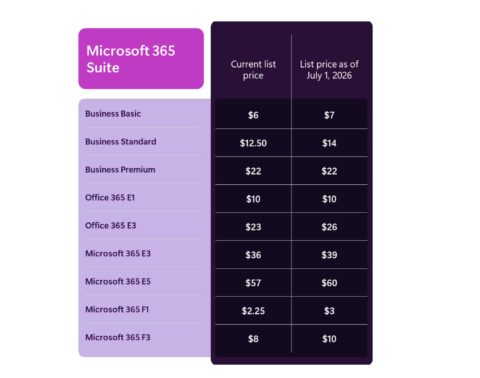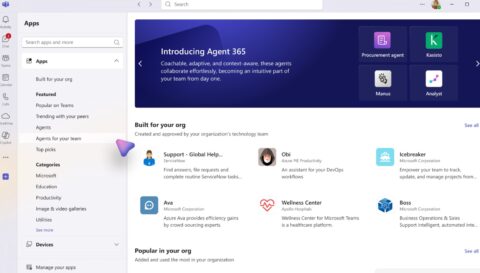Updated: April 8, 2024 (February 27, 2024)
BlogBuying new PCs has never been riskier

In the early days of any given technology, such as PCs, the risk for buyers is that they will pay too much, particularly when there is the chance they will buy the wrong technology or technology from a company that won’t be around in the future.
Until recently, the risk of paying too much or buying the wrong PC was low, regardless of whether one was buying a desktop, laptop, or tablet, or which vendor supplied the processor, RAM, or solid-state memory. Therefore, buyers could think about the PCs they wanted in terms of the device’s speeds and feeds. How fast is the processor? How much RAM is there? A simple rule of thumb was to err on the side of more RAM versus more processor power, and to favor solid state memory over spinning disks.
Today’s Risk: Buying the Wrong Technology
Now, the risk when buying a PC is swinging back to high. For possibly the next year, you might again buy the wrong technology. It all started with Windows 11. Here, the risk increased when Microsoft changed the specification significantly so it could use hardware to enforce a level of security. No more 32-bit processors; it is now a 64-bit only world. A Trusted Platform Module (TPM) became a requirement rather than a nice-to-have option. These changed requirements created risk by suddenly obsoleting many devices and introducing the possibility of buying a new or replacement device that was still capable of running Windows 10 but was incapable of running Windows 11. Although there were hacks to trick Windows 11 to install on hardware that didn’t meet the requirements, this was never a good idea.
With Windows taking the first steps toward a future based on AI/machine-learning (ML), the risk of buying a device that is obsolete before you get it in the door is higher than it has been in a long time. Microsoft has already demonstrated Windows features that use locally installed Neural Processing Units (NPUs) to cancel noise and provide camera effects (background blurring and natural eye contact) for collaboration software such as Teams. At the time of these feature demos there was only one device capable of running Windows that could benefit from these features and it was ARM-processor based: Surface Pro 9.
Since then, Microsoft has announced the “Voice Clarity” feature that was unique to NPU-based Surfaces is now coming to all Windows 11 devices — no NPU required. And several Windows PC makers have announced plans to ship PCs with various types of NPUs this year.
Think Local
Now, large-language model (LLM) generative AI is here. Microsoft is bombarding us with Copilots and users can create their own copilots. Today, much of the heavy lifting for these LLM-based services is done in data centers and they can be accessed by any device from a smartphone to a tablet or laptop. But it is likely that soon users will wish to train AI on, or at least focus their AI prompts at data stored locally and to process such data locally on their device. But which NPU will speed this work up?
Microsoft and others are particularly silent on this point, even though lots of machines demonstrated at CES in January are promoting their NPUs. But an NPU from Qualcomm is not the same as one from Intel or AMD or Nvidia. This means we need something like DirectX for AI. DirectX in Windows allowed software — especially games — to work directly with a devices video and audio hardware. When games use DirectX, they efficiently utilize multimedia accelerator features built into hardware to enhance the overall multimedia experience.
Is a future or enhanced version of DirectML going to play a similar role for NPUs? Microsoft announced in early February a developer preview for DirectML 1.13.1, which supports Intel AI Boost NPUs. But until it is clear which vendors support some APIs such as DirectML, or some other standard there is a risk when buying an expensive NPU-enabled processor-based PC. And there is risk to continuing to buy PCs without an NPU — at least for those users who are really using LLMs or other ML.
Rather than simple speeds and feeds, what buyers looking at hardware today really need to think about are standards. Buyers need to determine what standards they think are going to be necessary to exploit the hardware in their devices. Maybe not everyone will need an NPU in their device, but who knows?
For example, instead of thinking about whether a device needs a TPM, one needs to know what version of a TPM is needed. One needs to know what biometric standards for authentication are needed so the device has the appropriate cameras or fingerprint readers to support Windows Hello or other authentication services. And the big stumbling block is whether developers are going to support DirectML or some other AI-, ML- or LLM-API standard? Or will there be different standards for different AI features?
On a related front, one needs to be aware of two other standards that affect printing. Mopria- and Universal Print-compatible printers are going to be needed.
Caveat Emptor
Ignoring standards and just buying a Windows device with Windows 11 installed on it, or any off-the-shelf printer will mean the device is obsolete as you walk in the door. This is especially true for organizations who are still working to upgrade hardware as they retire Windows 10 devices and replace them with devices capable of running Windows 11 but possibly not optimized for versions of Windows that may become generally available soon.
“Let the buyer beware” when selecting PC hardware has seldom been more in effect.
Related Resources
Microsoft blog: Developer preview of DirectML support for Intel AI boost
Before you buy a Windows 11 ‘AI PC’ in 2024, read this
Windows 10 vs. Windows 11 hardware requirements (Directions members only)
Accelerating ML: CPU, GPU, TPU, NPU, and Oh, My (Directions members only)















